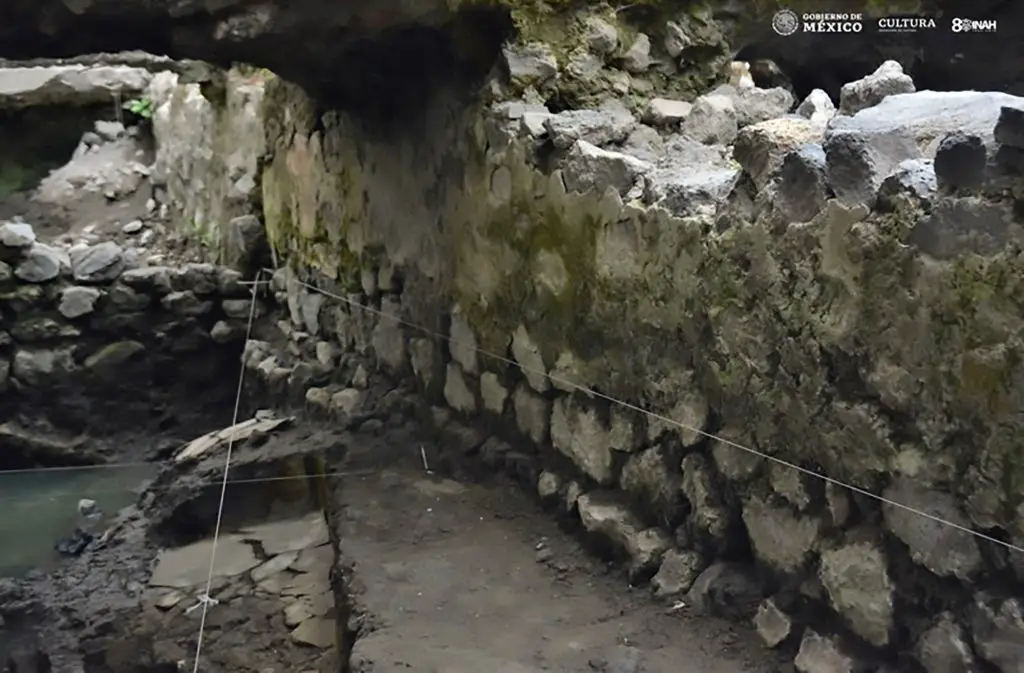Story By: Jonathan Macias, Sub Editor: Joseph Golder, Agency: Central European News
Video Credit: CEN/INAH
Archaeologists have discovered this pre-Hispanic sweat lodge used in religious ceremonies in a sacred neighbourhood where female deities were worshipped.
The discovery was found at an archaeological site in the neighbourhood of La Merced in the city centre of the Mexican capital Mexico City.

According to the Mexican National Institute of Anthropology and History (INAH), the sweat lodge known as a ‘temazcal’ in the pre-Hispanic culture was part of the noble neighbourhood of Temazcaltitlan, located in the Teopan area of the city-state of Tenochtitlan.
A sweat lodge is a low profile hut where a purification ceremony, or simply a sweat, is carried out as a religious ceremony. Temazcals were used to purify the body after exertion such as after a battle and also for healing the sick, improving health, and for women to give birth.
Tenochtitlan was a large city-state which is believed to have been inhabited by the Mexica, indigenous people of the Valley of Mexico who were the rulers of the Aztec Empire between 1428 and 1521 AD.

The city is believed to have been built on an island in what was then Lake Texococo in the Valley of Mexico.
Victor Esperon Calleja told local media: “The site is part of a protected area and that is why Archaeological Rescue Office of the INAH has intervened. Tenochtitlan was divided into four parts and we are in the part called Teopan in a neighbourhood called Temazcaltitlan where the sweat lodges were.”
The INAH has confirmed that the foundation of the temazcal is five metres (16.4 feet) long and 2.98 metres (9.7 feet) wide with a bathtub and a bench surrounded by walls made of adobe.

According to historical records, a dame from the Mexican nobility called Quetzalmoyahuatzin bathed in the temazcal as part of a purifying ritual before giving birth.
Archaeologists believe the neighbourhood was used as an area for worshipping female deities such as Ixcuina, the goddess of the labour, Tlazolteotl the deity of vice, purification, steam baths and lust, and Ayopechtli the goddess of birth proper.
Other female deities related to fertility, the land or water were also worshipped such as Coatlicue, Toci, Chalchiuhtlicue and Mayahuel.
The foundation of a colonial house and a tannery inhabited by people of the Mexica nobility between 1521 and 1620 AD after the Spanish conquest were also found at the excavation site, according to the INAH.
The ViralTab page is created by and dedicated to professional, independent freelance journalists. It is a place for us to showcase our work. When our news is sold to our media partners, we will include the link here.



